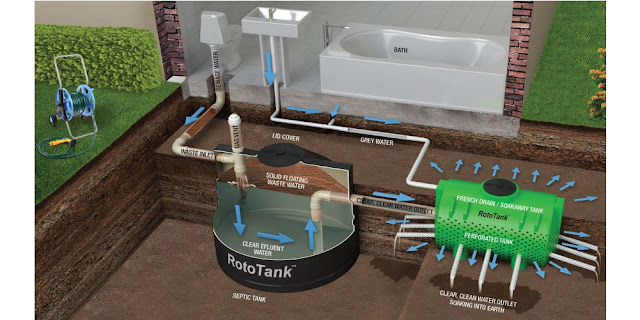Introduction
Welcome to the world of septic tanks, the unsung heroes of household waste management. While it might not be the most glamorous topic, understanding and caring for your septic tank is crucial for a clean, hassle-free home. In this comprehensive guide, we'll dive deep into the world of septic tanks, covering everything from their components to troubleshooting common issues. So, let's start by demystifying the "septic tank" and understanding its role in maintaining a happy, healthy home.
Understanding Septic Tank Systems
When it comes to your septic system, knowledge is power. Let's break it down into its essential components:
1. Septic Tank
- This underground chamber plays a vital role in separating solids from liquids.
- Bacteria work their magic in an anaerobic environment, breaking down waste.
2. Drain Field
- The treated liquid, effluent, is released into the drain field.
- Soil acts as a natural filter, further purifying the effluent before it returns to the groundwater.
Types of Septic Tanks
Not all septic tanks are created equal. Knowing the different types can help you make informed decisions:
| Type | Description |
|---|
| Traditional Septic Tanks | The standard choice, relying on anaerobic bacteria for waste breakdown. |
| Aerobic Treatment Units | These use oxygen to enhance the digestion process, making them more efficient in treating wastewater. |
| Cesspools | Unlike septic tanks, cesspools don't separate solids and liquids, making them simpler but requiring more frequent maintenance. |
Septic Tank Installation
Proper installation is the foundation of a trouble-free septic system. Consider these key factors:
1. Site Selection and Preparation
- Choose an area with suitable soil conditions and away from water sources.
- Ensure proper slope for drainage and easy access for maintenance.
2. Sizing Considerations
- The size of your septic tank depends on household size and water usage.
- An undersized tank can lead to frequent issues, while an oversized one may need to be fixed.
3. Installation Process
- Excavation and tank placement.
- Connection to the household plumbing.
- Establishment of the drain field.
Septic Tank Maintenance
Now that your septic tank is in place, regular maintenance is the key to longevity. Consider these maintenance tips:
1. Regular Pumping and Cleaning
- Schedule pumping based on household size, typically every 3-5 years.
- Hire professionals for thorough cleaning to prevent build-up.
2. Proper Waste Disposal Practices
- Avoid flushing non-biodegradable items.
- Chemicals like bleach and strong cleaners can disrupt the bacterial balance – use them sparingly.
Signs of Septic System Issues
Detecting problems early can save you from major headaches down the line. Keep an eye out for these indicators:
- Indicate a potential blockage in the system.
- Address promptly to prevent backups.
2. Foul Odors
- Could be a sign of a leak or ventilation issue.
- Investigate and rectify to maintain a pleasant living environment.
3. Lush Grass Over the Drain Field
- May signal a problem with drainage.
- Consult professionals to assess and resolve the issue.
Troubleshooting Common Septic Tank Problems
Let's roll up our sleeves and tackle some common issues you might encounter:
1. Dealing with Blockages and Clogs
- Use enzyme-based additives to break down organic matter.
- Professional snaking or hydro-jetting may be necessary for persistent clogs.
2. Repairing Leaks and Cracks in the Tank
- Identify and assess the extent of the damage.
- Patch small cracks, but extensive damage may require tank replacement.
3. Restoring Proper Drainage in the Drain Field
- Address soil compaction through aeration.
- Redirect water runoff to prevent oversaturation.
Environmental Impact of Septic Systems
Beyond your property lines, your septic system has a broader impact. Here's how to be a responsible septic system owner:
1. Groundwater Protection
- Maintain a safe distance from wells and water bodies.
- Regular inspections and maintenance prevent contamination risks.
2. Mitigating Environmental Impact
- Choose biodegradable products.
- Implement water conservation practices to reduce the load on your system.
Regulations and Permits
Before you embark on any septic system endeavours, be aware of local regulations and obtain the necessary permits:
1. Compliance with Local Health Department Regulations
- Understand local rules regarding septic system installation and maintenance.
- Non-compliance can result in fines and legal issues.
2. Permits for Septic System Activities
- Check with local authorities for required permits.
- Proper documentation ensures a smooth process.
Conclusion
Congratulations! You've now graduated from "Septic Systems 101." By understanding your septic tank and following proper maintenance practices, you're ensuring a smoothly running household and contributing to environmental well-being. Remember, a happy septic tank equals a happy home. Here's to many trouble-free years ahead!
.png)



Comments
Post a Comment